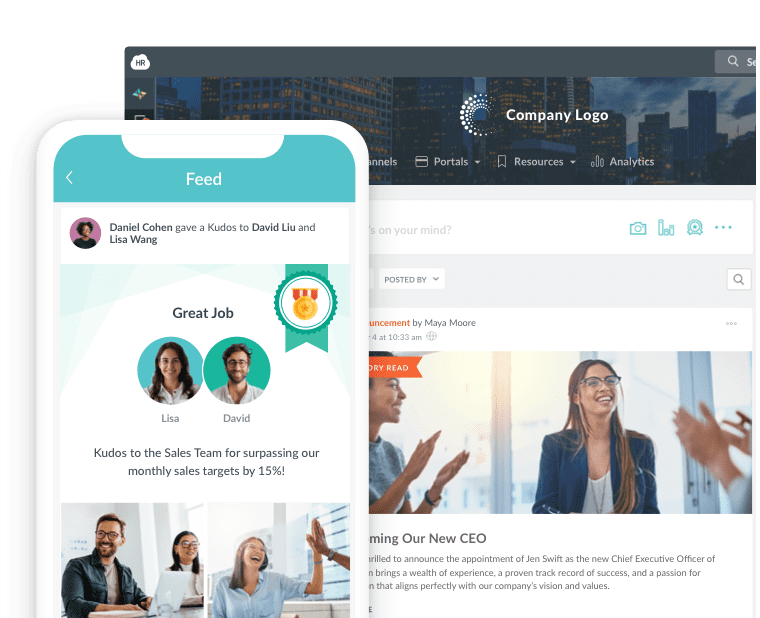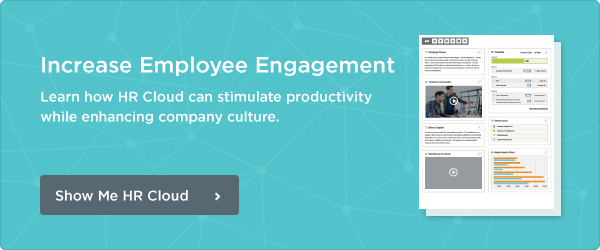
 Try
Out
Our
Try
Out
OurEmployee Engagement Software For Free

For many employers, frustration still exists when it comes to determining what employee engagement really looks like. It’s not so much about unlocking the secrets of successful engagement but really understanding how to institute change that impacts culture and behavior.
Avoid the revolving door and take a closer look at employee engagement.
The SHRM Workplace Vision study discusses the importance of employee engagement and factors that influence engagement. The research concluded something we all know but are still struggling to take action on: “Employee engagement is still central to business performance and will continue to be a critical component of organizational success. HR professionals will need to stay closely in tune with how engaged their workforce is by tracking engagement levels and working with their organizational leaders to build strategies for increasing employee engagement now and in the years ahead.”
Tweet: SHRM study outlines factors that influence employee engagement @HRCloud
Don’t Confuse Happy with Engaged
Research shows that companies with high employee engagement regularly outperform their competition. It's easy to understand how employees who come to work each day, filled with enthusiasm and interest, would add value to the bottom line of any company.
However, it’s important to note that a happy employee does not equal an engaged employee. I know the two can be easily confused, but think of it this way—an employee may be happy, but if they are sitting around most of the day and not creating or producing anything of value, they’re not engaged. Their happiness is not helping the organization to achieve performance goals. In fact, you should be worried about this group of “happy” employees that lack contribution.
Consider this startling point: Sustainablebrands.com shared the following from a recent Gallup survey: “If 100 percent of your employees were engaged in your business, that would translate to an increase of anywhere from $450-550B in increased revenue for US companies alone.”
An engaged and productive employee will help drive your team to deadlines and goals, innovating and producing along the way. But, as you’ll read from the SHRM survey, there is definitely room for improvement and change as it relates to employee engagement.
Tracking Engagement
The data published in the SHRM Employee Job Satisfaction and Engagement research report shows that employees appear to be only moderately engaged overall with an index score of 3.6.
The report uses a 5-point scale of all employee engagement items—with 1 equaling “not at all engaged” and 5 representing “highly engaged”. The SHRM survey examines several aspects of employee engagement, including the conditions that determine employee engagement and the impact it has on opinions and behaviors.
According to the study, the most important conditions of engagement continues to be the relationship with co-workers. Other critical aspects of employee engagement include opportunities to use employees’ skills and abilities at work, relationship with immediate supervisor and the work itself.
The second set of data tracked in the SHRM study shows employee opinions and behaviors related to their engagement:
• 79% of employees said they are determined to accomplish their work goals and were confident they could meet them.
• 69% of employees said they frequently feel like they were putting all their effort into their work.
• 66% of employees said that while at work, they were almost always completely focused on their work projects.
The major concern for employers is that the 2014 data shows a drop in the level of employee engagement as tracked by SHRM over a three year period. Ouch! This is tough to swallow for most organizations and again, without action, employees will continue to search elsewhere for new opportunities.
Employee engagement surveys by Gallop and Blessing-White show similar drops in engagement scores. The 2013 Gallop research shows an overall low level of employee engagement among their surveyed clients, with only about 30% truly engaged in their work.
Improving Employee Engagement
For any employer focused on improving employee engagement, the SHRM data is a chance for greater understanding and an opportunity for renewed focus on the factors affecting engagement. The data contains valuable detailed insights on these factors, as summarized below:
• Leadership: As leadership responsibility and stress rise, there may be less time for leaders to focus on key engagement factors.
• Culture: Organizations will continue to experiment with creating cultures supporting engagement.
• Demographics: Multiple challenges exist here… as Boomers exit and Millennials and Gen X take center stage in the workforce.
• Stress: Pay, workload and inadequate staffing threaten engagement efforts.
• Job Satisfaction: Compensation/pay leads the list of employee job satisfaction factors ahead of job security which dominated the list in previous years.
Remember that while we work hard to understand engagement and make changes that impact our organization, if we are not consistently improving engagement levels they will drop and we’ll be back to square one.
Keep Reading
Employee Engagement Surveys: Enhancing Satisfaction, Productivity, and Retention
Employee engagement is vitally important in virtually every industry today. But it can be
Employee Engagement and Neurodiversity: Creating Inclusive Strategies for All
The impact of diversity, equity, and inclusion (DEI) strategies in the workplace has been





